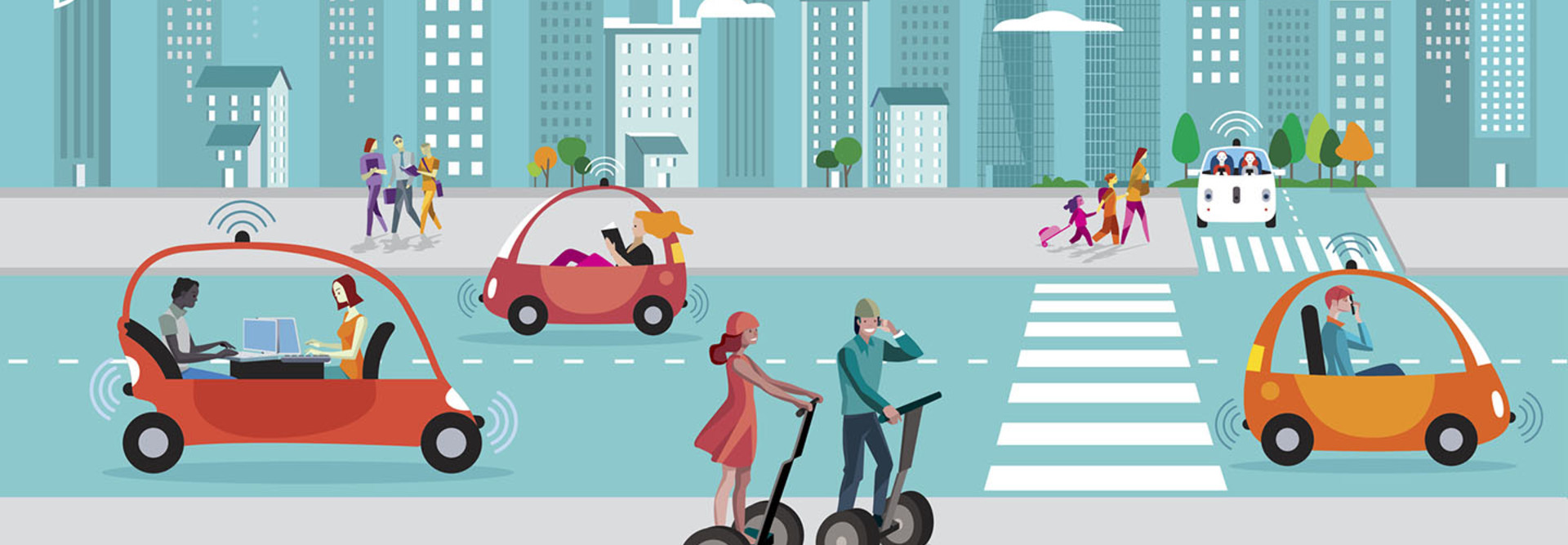Cities, States Look to Make Lanes for Self-Driving Tech
If glancing at your smartphone means spotting a ride-sharing app like Uber or Lyft, then you already know about the “passenger economy,” or that’s what Intel’s recent report around autonomous vehicles calls the move toward driverless vehicles.
After acquiring Israel-based autonomous vehicle startup MobileEye in March for nearly $15 billion, the technology giant has released a report that highlights the sea change in how people think about transportation, and, as a result, forecasts huge gains for Mobility-as-a-Service.
“‘Being driven’ by intelligent, pilotless vehicles will represent the essential nature of future transportation,” the report states.
Moreover, the report predicts that business use alongside emerging transportation for tourism, healthcare, entertainment and more will contribute to the passenger economy driving $7 trillion revenue in 2050 — a year in which driverless cars will “account for nearly 50 percent of all vehicles sold.”
SIGN UP: Get more news from the StateTech newsletter in your inbox every two weeks
No Drivers Means More Secure Roads and More Free Time
So what’s driving this sea change in thought around transportation? Safety and convenience are certainly factors.
“Conservatively, 585,000 lives can be saved due to pilotless vehicles in the era of the Passenger Economy from 2035 to 2045. This is nearly as many people that live in the city of Dusseldorf, and would fill the Melbourne Cricket Grounds nearly six times over,” the report notes.
Other impressive statistics include predictions that driverless vehicles could free up more than 250 million hours of commuter time annually for travelers in the world’s most congested cities, and that public-safety costs related to traffic accidents would drop by $234 billion between 2035 and 2045.
Localities Look to Stay in the Lead With Autonomous Tech
Intel’s large, strategic investment and its future predictions certainly speak to a growing market as many cities begin to turn their eye to the technology and states begin to loosen regulations around self-driving car development.
While Pittsburgh has infamously teamed with Uber to test its driverless car technology, which is now on the road, Virginia Gov. Terry McAuliffe has announced his intention to make the commonwealth a home for all things autonomous. Most recently, the state has introduced a new Autonomous Systems Center of Excellence with the aim to capitalize on the flourishing industry.
“The autonomous systems industry is one of the cornerstones of the new Virginia economy,” said Gov. McAuliffe in a statement. “With the establishment of the Autonomous Systems Center of Excellence, we will send a clear message that Virginia is open for unmanned systems business. Over the past three years, we’ve made tremendous progress to support this emerging industry, and we’ll continue our efforts to cut red tape and open the door for further growth.”
Ohio's government is looking at similar endeavors, embarking on an effort in February to make its major highway a testing ground for automated transportation, Cleveland.com reports.
Meanwhile, in Beverly Hills, Calif., the city council adopted a resolution last year supporting the development of a fleet of driverless cars for public transit purposes with the aim to make the city a leader in the technology’s deployment.
“If you’re an innovator, test it here, put your vehicles on the roads of Beverly Hills,” Grayson Brulte, a technology industry consultant and advisor to the municipality’s Smart City/Technology Committee, told Government Technology.
With the median age of the city’s 34,000 residents sitting at 43, and with 14 percent of the city’s population over 70 — as opposed to just 8 percent in nearby Los Angeles — the technology could help the aging population get around.
“They’d love to get out more,” Brulte said. “Right now a lot of them need a relative to drive them, or need to call a taxi. With an on-call (autonomous vehicle), they’ll get their freedom back.”
And while nothing is certain about the prospects of autonomous tech, states and cities are keen to stay on the leading edge by making room on the road.
“We can lag or we can lead,” Beverley Hills Mayor John Mirisch told Government Technology. “If we don’t do it, other regions, other states and other countries will.”









